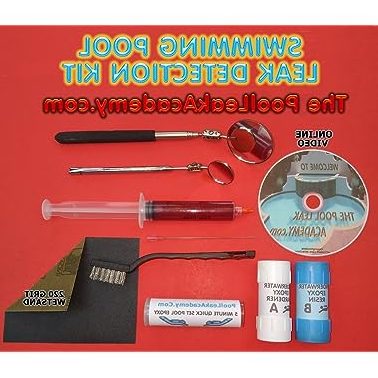Are you tired of dealing with a leaky pool? Are you constantly adding water to maintain its level? Is your pool losing water faster than it should? If you answered yes to any of these questions, then you’ve come to the right place. In this article, we will explain everything you need to know about pressure testing a pool for leaks. Whether you’re a pool owner or a professional in the industry, we’ve got you covered. So, sit back, relax, and get ready to dive deep into the world of pool leak detection.
To find out more about how to pressure test a pool for leaks stay around.
Learn to Pressure Test a Pool for Leaks
To pressure test a pool for leaks, you will need to follow these steps:
1. Gather the necessary equipment: You will need a pressure gauge, a plug or testing device suitable for sealing the pool pipes, a bicycle pump or compressor for increasing the pressure, and a diving mask or goggles.
2. Close off the main drain and skimmer: Ensure that both the main drain and skimmer are closed and sealed. This will prevent any air or water from escaping during the pressure test.
3. Attach the pressure gauge: Connect the pressure gauge to a suitable access point in the pool plumbing system. This could be a drain plug or an open pipe. Make sure the connection is secure to prevent any air or water leakage.
4. Pressurize the system: Use the bicycle pump or compressor to gradually increase the pressure in the pool plumbing system. Start by increasing the pressure to about 5 PSI (pounds per square inch) and monitor the gauge for any fluctuations. If the pressure remains steady, continue increasing it until the pressure reaches about 20 PSI.
5. Monitor the pressure gauge: Once the desired pressure is reached, observe the pressure gauge for any significant drops over a period of 15-30 minutes. A drop in pressure could indicate the presence of a leak in the pool plumbing system.
6. Inspect the pool: While monitoring the pressure gauge, carefully inspect the pool’s surface, walls, and surroundings for any signs of leaking water. Look for wet areas, damp spots, or cracks that may indicate a leak. Additionally, check for any abnormal changes in water level during the pressure test.
7. Test individual components: If the pressure test reveals a drop in pressure or signs of leakage, further testing is required. Use a hose or pipe plug to close off specific components of the pool system, such as the return lines, skimmer, or main drain. Re-pressurize the system and monitor the gauge to identify which component(s) may be the source of the leak.
8. Repair or replace faulty components: Once the source of the leak is identified, make the necessary repairs or replacements. This may involve fixing a cracked pipe, replacing a faulty valve or seal, or patching an area of the pool’s surface. Consult with a professional if you are unsure how to repair or replace the faulty components.
9. Repeat the pressure test: After the necessary repairs or replacements are made, repeat the pressure test to ensure that the leak has been effectively fixed. Follow the same steps as before, gradually increasing the pressure and monitoring the gauge for any fluctuations or drops.
By following these steps, you can effectively pressure test a pool for leaks and identify any areas that may require repair or replacement.
How to pressure test a pool for leaks: Faqs.
1. How can I pressure test my pool for leaks?
To pressure test your pool for leaks, you will need to first close all the pool’s skimmer and return valves. Then, using a pool plug or an inflatable bladder, block off the skimmer and return lines. Next, attach a pressure gauge to the pool pump and turn it on. If there are any leaks, the pressure gauge will drop, indicating the presence of a leak.
2. What pressure should I use to test my pool for leaks?
It is recommended to use a pressure of around 20-25 PSI (pounds per square inch) to test your pool for leaks. However, it is crucial to follow the manufacturer’s guidelines of your pool equipment, as using excessive pressure can cause damage to the system.
3. Can I perform a pressure test on my pool on my own?
While it is possible to perform a pressure test on your pool by yourself, it is usually recommended to hire a professional for accurate results and to avoid potential damage to the pool equipment. A professional pool service will have the necessary tools and expertise to conduct the test effectively.
Final thought about how do you pressure test a pool for leaks?
In conclusion, properly pressure testing a pool for leaks is crucial to ensure its structural integrity and prevent potential water loss. By following the step-by-step process highlighted in this text, pool owners and professionals alike can confidently identify and address any leaks, ensuring the longevity and enjoyment of the pool. Remember to conduct the test systematically, applying sufficient pressure, monitoring for any drops, and systematically checking all potential leak points. Regular maintenance and timely repairs will not only save water but also preserve the pool’s functionality, preventing costly damages in the long run.

